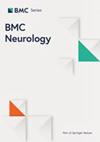脑磁共振成像容积测量在比较脑外伤、阿尔茨海默病和行为变异性额颞叶痴呆症时的诊断效用
IF 2.2
3区 医学
Q3 CLINICAL NEUROLOGY
引用次数: 0
摘要
具有容积量化功能的脑部磁共振成像(MRI Volumetry)可以通过识别视觉评估中可能不明显的脑萎缩来改善神经认知障碍患者的诊断分界。目的是研究核磁共振成像容积测量在创伤性脑损伤(TBI)、早发阿尔兹海默病(EOAD)、晚发阿尔兹海默病和行为变异性额颞叶痴呆(bvFTD)中的诊断效用。我们利用了 137 名 TBI(n = 40)、EOAD(n = 45)、LOAD(n = 32)和 bvFTD(n = 20)患者。参与者进行了三维 T1 脑磁共振成像,并进行了磁共振成像容积测量。扫描体积由 Neuroreader 进行分析。单因素方差分析比较了不同诊断组的脑容量。通过对 Neuroreader 指标进行一一交叉验证,进行判别分析,以确定各组的诊断划分。与其他组别相比,LOAD 年龄最大(F = 27.5,p < .001)。性别差异无统计学意义(p = .58),女性占整个组群的 54.7%。与创伤性脑损伤相比,EOAD 和 LOAD 的迷你精神状态检查(MMSE)得分最低(EOAD 的 p = .04 和 LOAD 的 p = .01)。LOAD的海马体积最低(左海马F = 13.1,右海马F = 7.3,p < .001),TBI的白质体积较低(F = 5.9,p < .001),EOAD的左顶叶体积较低(F = 9.4,p < .001),bvFTD的灰质总体积较低(F = 32.8,p < .001),尾状体萎缩(F = 1737.5,p < .001)。曲线下面积从92.3%到100%不等,灵敏度在82.2%到100%之间,特异性为78.1%-100%。创伤性脑损伤是最准确的诊断。预测特征包括尾状体、额叶、顶叶、颞叶和总白质体积。我们确定了区域容积差异对多种神经认知障碍的诊断作用。脑磁共振成像容积测量技术可广泛应用于这些疾病的诊断。本文章由计算机程序翻译,如有差异,请以英文原文为准。
Diagnostic utility of brain MRI volumetry in comparing traumatic brain injury, Alzheimer disease and behavioral variant frontotemporal dementia
Brain MRI with volumetric quantification, MRI volumetry, can improve diagnostic delineation of patients with neurocognitive disorders by identifying brain atrophy that may not be evident on visual assessments. To investigate diagnostic utility of MRI volumetry in traumatic brain injury (TBI), early-onset Alzheimer disease (EOAD), late-onset Alzheimer disease, and behavioral variant frontotemporal dementia (bvFTD). We utilized 137 participants of TBI (n = 40), EOAD (n = 45), LOAD (n = 32), and bvFTD (n = 20). Participants had 3D T1 brain MRI imaging amendable to MRI volumetry. Scan volumes were analyzed with Neuroreader. One-way ANOVA compared brain volumes across diagnostic groups. Discriminant analysis was done with leave-one-out cross validation on Neuroreader metrics to determine diagnostic delineation across groups. LOAD was the oldest compared to other groups (F = 27.5, p < .001). There were no statistically significant differences in sex (p = .58) with women comprising 54.7% of the entire cohort. EOAD and LOAD had the lowest Mini-Mental State Exam (MMSE) scores compared to TBI (p = .04 for EOAD and p = .01 for LOAD). LOAD had lowest hippocampal volumes (Left Hippocampus F = 13.1, Right Hippocampus F = 7.3, p < .001), low white matter volume in TBI (F = 5.9, p < .001), lower left parietal lobe volume in EOAD (F = 9.4, p < .001), and lower total gray matter volume in bvFTD (F = 32.8, p < .001) and caudate atrophy (F = 1737.5, p < .001). Areas under the curve ranged from 92.3 to 100%, sensitivity between 82.2 and 100%, specificity of 78.1-100%. TBI was the most accurately delineated diagnosis. Predictive features included caudate, frontal, parietal, temporal lobar and total white matter volumes. We identified the diagnostic utility of regional volumetric differences across multiple neurocognitive disorders. Brain MRI volumetry is widely available and can be applied in distinguishing these disorders.
求助全文
通过发布文献求助,成功后即可免费获取论文全文。
去求助
来源期刊

BMC Neurology
医学-临床神经学
CiteScore
4.20
自引率
0.00%
发文量
428
审稿时长
3-8 weeks
期刊介绍:
BMC Neurology is an open access, peer-reviewed journal that considers articles on all aspects of the prevention, diagnosis and management of neurological disorders, as well as related molecular genetics, pathophysiology, and epidemiology.
 求助内容:
求助内容: 应助结果提醒方式:
应助结果提醒方式:


